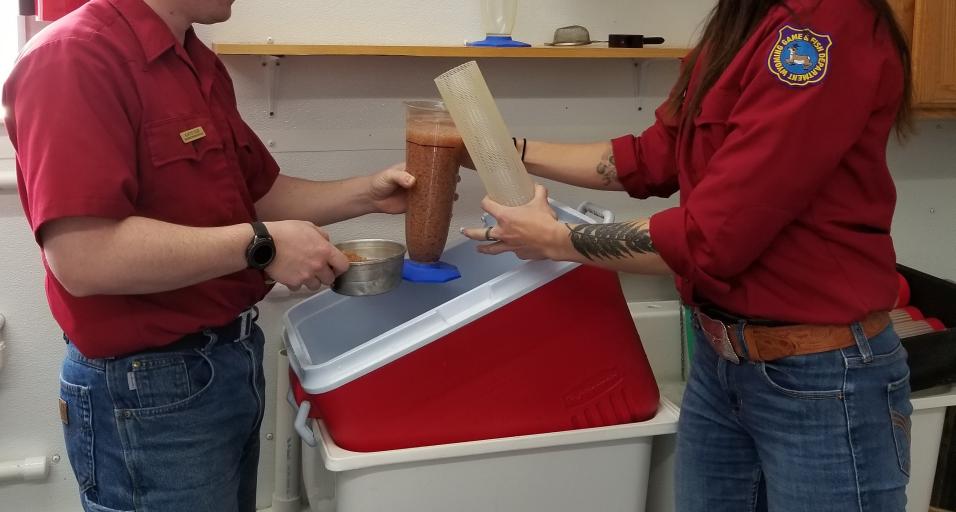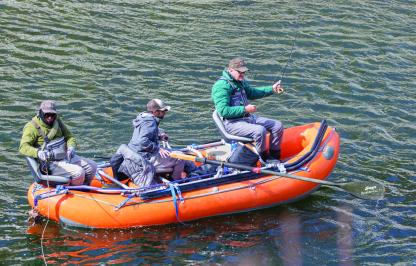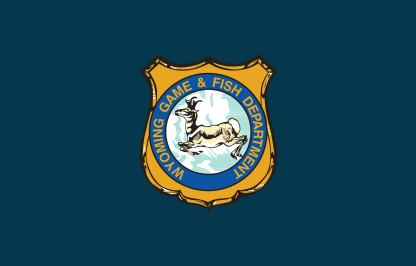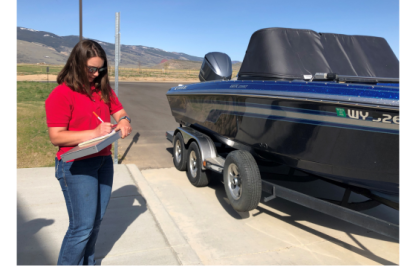‘Cutting out the middle man’ is usually seen as a good thing. The catchphrase often means removing an unnecessary step bogging down an otherwise smooth process. But for raising kokanee salmon in Wyoming from tiny eggs to stockable-sized fish, the middle man is a critical component.
On Feb. 23, personnel at the Story Fish Hatchery carefully packed and shipped 875,000 kokanee eggs to the Dan Speas Hatchery in Casper. The eggs arrived to the hatchery’s care weeks earlier from Tillett Springs Hatchery near Lovell. The eggs arrived ‘green’ and it was the job of the Story Hatchery to incubate the eggs to the ‘eyed’ stage.
“We are the middle man you could say. Our job is to incubate and ship the eggs,” said Story Hatchery Superintendent Steve Diekema. “We have more cold water available than other hatcheries and the space to chill large amounts of eggs while they develop.
The eyed stage occurs 30 to 60 days after fertilization when the eyes of the fish become visible in the embryo. These times can be shortened or lengthened by manipulating water temperatures, a process that the hatchery employed while caring for the eggs.
More than 1.8 million kokanee eggs arrived at Story Hatchery from Tillett in three lots between Nov. 4 and Dec. 2. Tillett Hatchery is one of the only facilities in the country with a breeding population of kokanee. Prior to it’s first kokanee spawn in late 2019, eggs were secured from wild populations. Tillett now provides a disease-free, reliable source of eggs from brood stock annually.
Upon arrival in Story, the eggs were placed in stackable drip trays, with five gallons of water gently showering them each minute. Because the eggs arrived at different times and were of different ages, hatchery personnel adjusted water temperatures for each batch, ensuring that by the time the eggs shipped to Speas for rearing, they were at a uniform stage of development. Cold water slows development of eggs, while warmer temperatures speed the process.
The first and therefore oldest group of eggs was kept at a 44 degree water temperature for five days before being reduced to 39 degrees to slow growth. The second and younger batch of eggs was kept at 52 degrees for five days, then reduced to 39 degrees. The final and youngest batch was kept at 52 degrees for two weeks, then reduced to 39 degrees.
“By using water temperature, we manipulated the eggs to all eye at the same time so they are all at the exact same stage of development,” said Diekema. “This way they receive one big batch at one time instead of at different times.”
Hatchery personnel also made two shipments of approximately 724,000 eggs to the Mount Shavano State Fish Hatchery in Colorado and the McNenny State Fish Hatchery in South Dakota in January. But the shipment to Speas in February was the largest Story Hatchery has done.
“We’ve done some rainbow egg shipments around 600,000 and others around 500,000, but this is the biggest shipment I’ve done out of here,” said Diekema.
The entire process is tied to statewide fish stocking schedules that are developed two or more years in advance. As fisheries biologists determine the species, size and number of fish they want to stock in specific waters, the state’s hatcheries begin planning for production to make sure they have mature brood stock, can spawn the number of eggs needed and get them to rearing facilities in enough time to grow into fingerling or catchable-sized fish before stocking.
“The biologists tell us they want X amount of fish on X date and it is our job to make it happen,” said Diekema.
“It is all about timing and maximizing space,” he continued. “Speas had fall rainbow trout eggs in December, hatched them, put them on feed and then moved them out before the kokanee eggs arrived. On our end, as we were shipping out our fall spawning species - brook, brown, lake, splake and tiger trout - we were backfilling that space with the kokanee eggs coming in from Tillett. It was tight but it worked out great. This kokanee program is new and we are really excited about it.”




